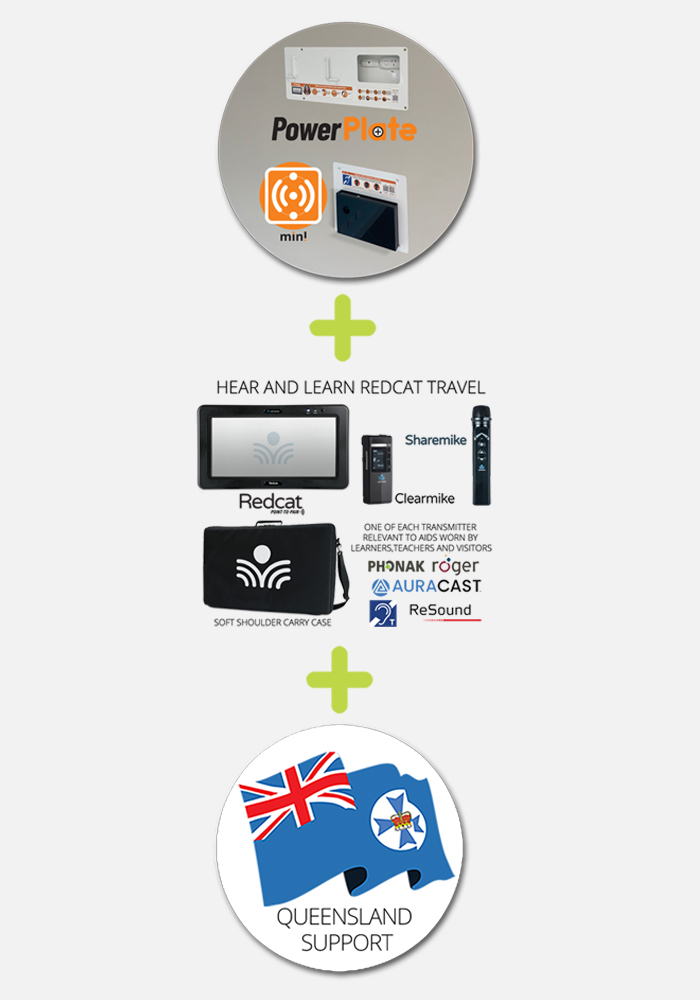The Queensland Department of Education has introduced updated standards for new school builds, refurbishments, and prefabricated educational spaces, reshaping requirements for hearing augmentation infrastructure in educational settings. These new standards necessitate forward-thinking approaches, moving away from traditional defunct solutions
A new era in hearing augmentation for schools
The revised standards acknowledge that hearing-aided students, teachers, and visitors use various brands of hearing aids, each utilising different transmission technologies. This shift calls for designs that prioritise agility and cross-brand compatibility, allowing all users seamless access to hearing augmentation. Traditional solutions that assume there is one universal transmission platform do not comply with the revised standards.
Embracing modern design for enhanced accessibility
Aligned with Hear and Learn’s commitment to “All Audio to All Ears. Always,” the Queensland QED Design Standards (Version 5.0, October 2024) mandate that any and all audio-emitting devices (including Screen audio) must connect to a hearing augmentation solutions with multiple transmitter compatibility, rather than a single option. This performance-based approach means previous one-size-fits-all solutions no longer suffice.
Community soundfield systems for inclusive learning
The standards also require buildings to have a communal bundle of voice capture and broadcast technologies, known as soundfield systems, to benefit learners that are not necessarily hard-of-hearing, to ensure auditory access for all learners in all educational spaces. Hear and Learn’s hearing augmentation solutions are tailored to meet these new requirements, providing easy installation backed by expert support for Educators when buildings are available for use.
Local support for architects, consultants, and certifiers
With on-the-ground support in Queensland, Hear and Learn offers architects, electrical consultants, builders, electricians and IT experts with complimentary guidance to streamline project compliance. Certifiers and surveyors can also benefit from our offerings — including the UConnect Mini, UConnect SoundHouse, and Lightspeed Redcat soundfield—alongside expert advice from Access Consultants.
Applauding Queensland’s visionary standards
We commend the Queensland Department of Education’s forward-thinking vision in setting these standards, which include:
- Hearing augmentation in all audio spaces: All spaces with audio devices (e.g., projectors, displays) must include hearing augmentation systems (p. 133).
- Hearing augmentation in prefabricated buildings: Systems must be extendable to prefabricated structures as they are added to the site (p. 133).
- Standards for new builds and refurbishments: Mandatory standards apply to all new construction and work on existing facilities, with exceptions only by departmental approval (p. 14).
- Portable soundfield and transmitter/receiver requirements: A minimum of two sets of amplifiers, wireless transmitters, receivers, and microphones must be provided per teaching building, with additional sets in high-traffic areas (p. 133).
- Clear signage: Signage indicating the availability of hearing augmentation systems must be posted at each entry, displaying the international symbol for deafness and details about system access and receiver locations (p. 133).
- Ease of use and reliability: Systems must offer easy and reliable device pairing, audio input grouping, and include all necessary equipment for a fully functioning setup.
Hear and Learn solutions fully comply with these updated standards, helping schools seamlessly transition to a more inclusive environment. Contact us today to discuss what hearing augmentation solution would suit your space best.
See our SoundHouse page for solutions involving permanent Soundfield bundle options. QLD bundle available in on-wall and in-wall options.
QLD state schools hearing augmentation/Soundfield bundle
Please click below to download an explanation of the standards, and to find spec. wording and spec. artwork that stakeholders may find useful.

